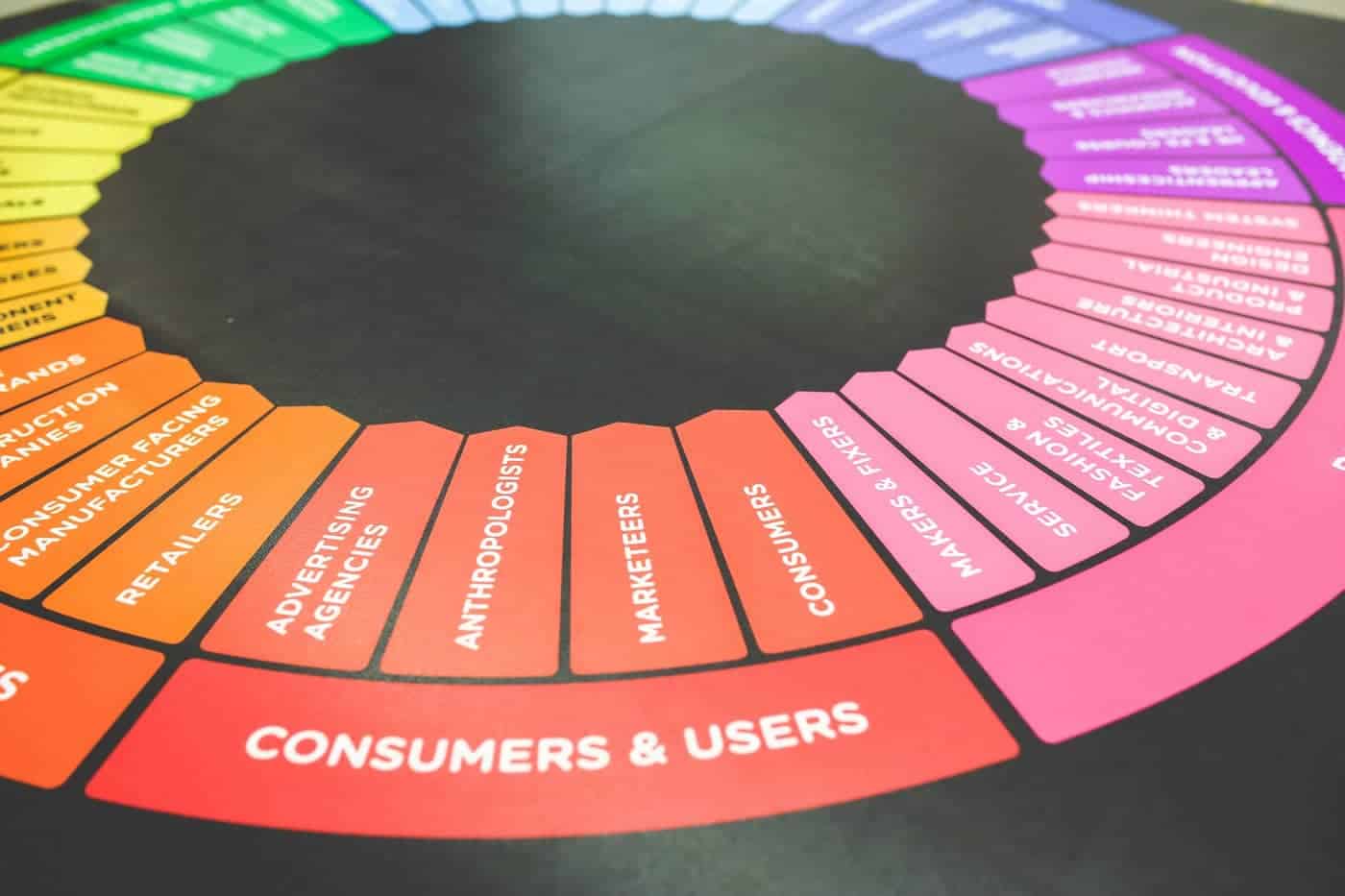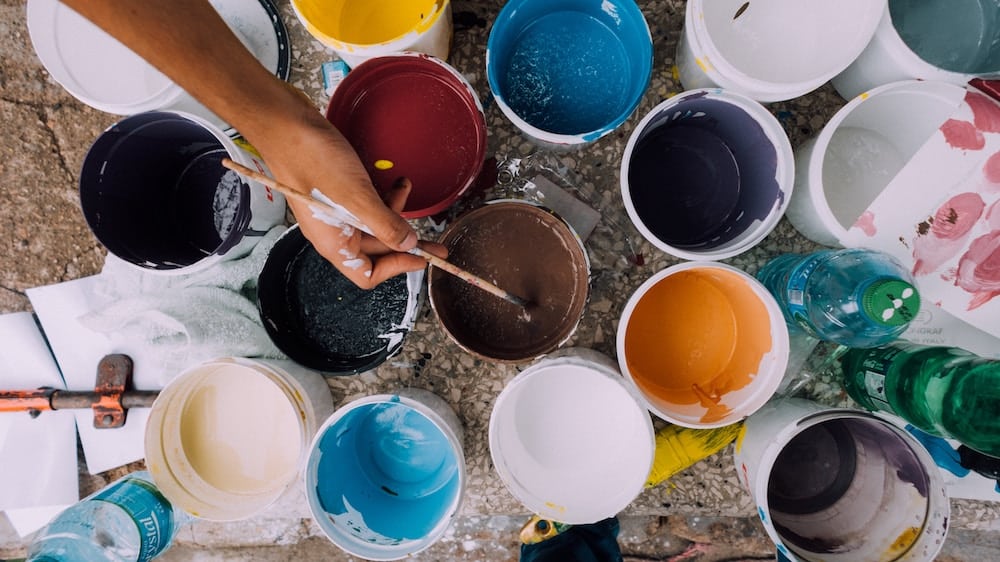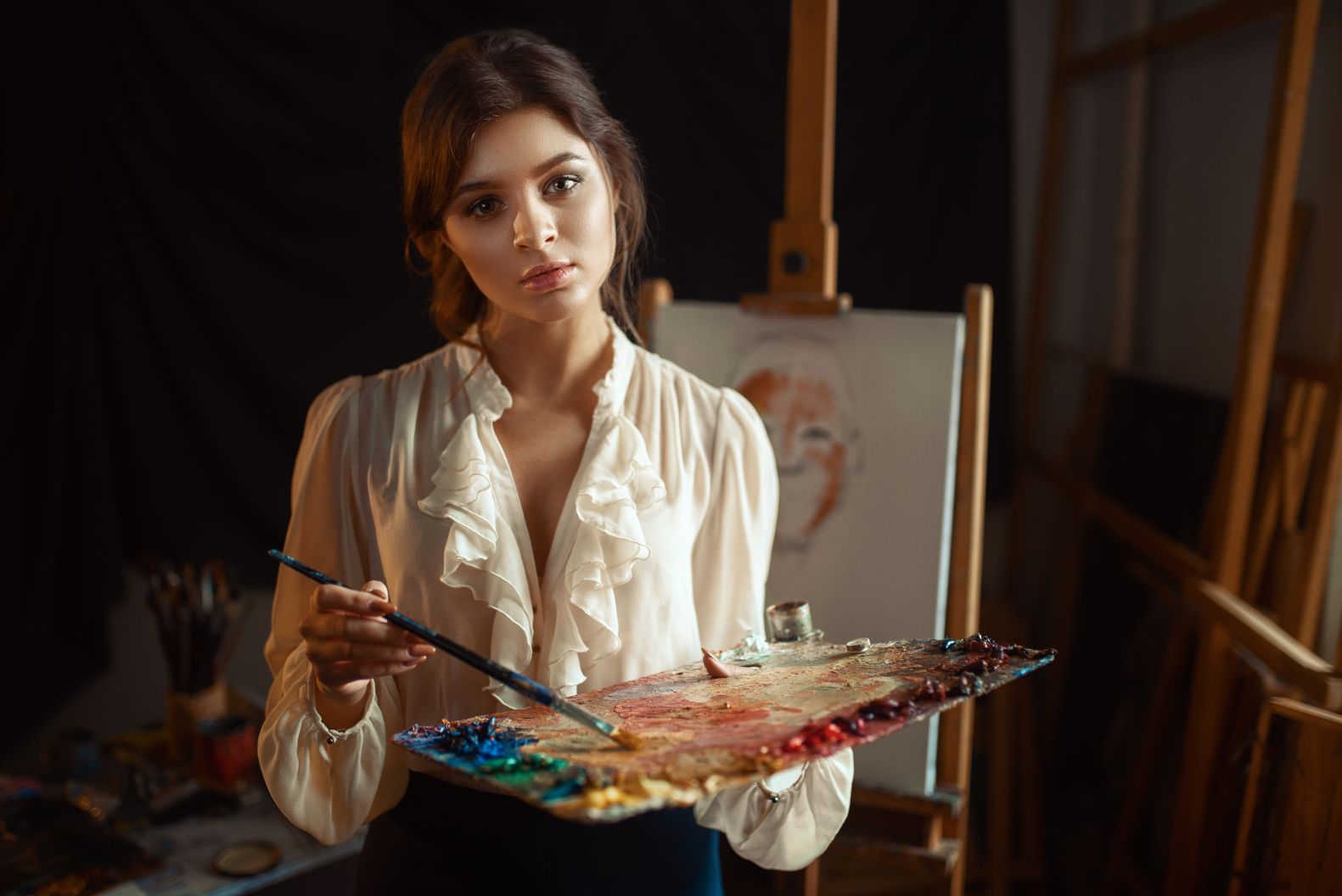Last Updated on February 28, 2024
When starting out as an artist, or when you are developing your art business, it is essential to consider how the psychology of color might affect your artwork and buyers’ perceptions. This is especially important if you are looking to be picked up by a world-renowned art gallery or collector such as Charles Saatchi.
What is color psychology?
Color psychology is the study of color in terms of how it determines human behavior, such as how it influences perceptions, emotions, and how effective the impact of the product, logo, or artwork is.
One study undertaken by Paul A. Bottomley and John R. Doyle tested the impact that color has on the average person, separating these effects into two categories – functional (F) and sensory-social (S). Functional effects of the colors fulfill a need or solve a problem, whilst sensory-social conveys attitudes, status, or social approval.

Bottomley and Doyle’s findings are:
- Red is perceived as lust, power, excitement, love, speed, and anger (S)
- Yellow equals competence and happiness (S), as well as inexpensive and low quality (F)
- Green can exude both envy and health (S), and eco-friendliness (F)
- Blue means masculinity and competence (S), plus high quality, corporate and reliability (F)
- Pink has connotations of sophistication, sincerity, and femininity (S)
- Violet and purple is authority, sophistication, and power (S)
- Orange is perceived as warm and exciting (S)
- Brown means ruggedness (S)
- Black can mean grief, sophistication, fear and death (S), but also a product that is expensive (F)
- White exudes happiness, sincerity and purity (S)
Not only does color psychology state that color can affect how a customer or client might perceive your artwork, and what emotional reaction it might cause, color psychology also explains that color can influence purchasing decisions.
In fact, Satyendra Singh argues that customers generally make an initial judgement on a product within 90 seconds of interaction with that product, and about 62% to 90% of that judgment is based on color. This is why color psychology and marketing work hand in hand on a daily basis.
How might this affect your artwork and artistic process?

As an artist, it’s not just about your creativity and creating the piece of artwork itself, but it also requires you to develop your business skills and sell your artwork to collectors, clients, and customers. In this sense, considering the psychology behind the colors you choose to create your artwork can help you to market your artwork once it is complete.
For example, using black silhouettes and shadows might not just add depth and character to your artwork, but also make it look expensive, allowing you to charge more as a premium product. Conversely, though yellow might be eye-catching in a gallery, it might also make your art be perceived as inexpensive and low quality.
Final thoughts
Overall, the psychology of color can affect your artwork in two main important ways. Firstly, the colors you choose can affect how people emotionally react to your artwork and their perception of quality. It should also be considered in terms of your business plan and marketing. Therefore, color psychology is extremely important for artists to consider every step of the way.

